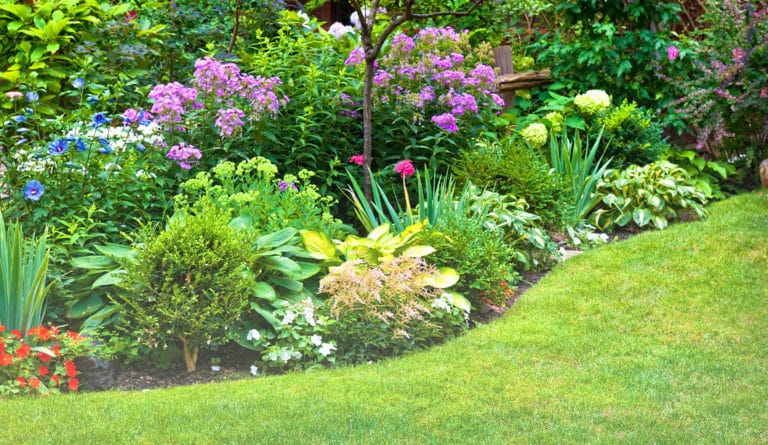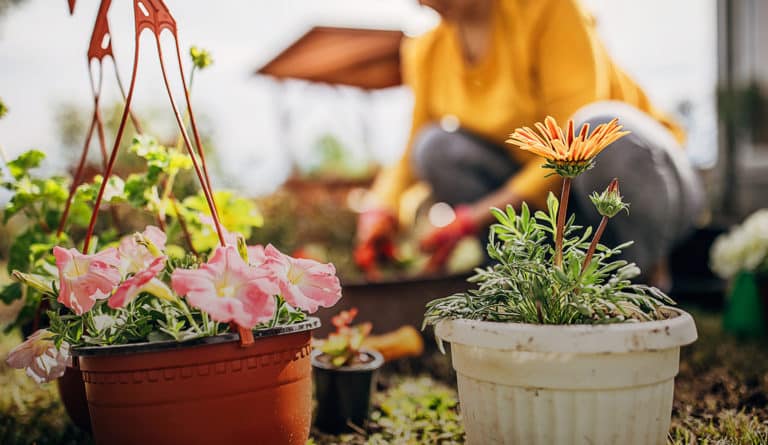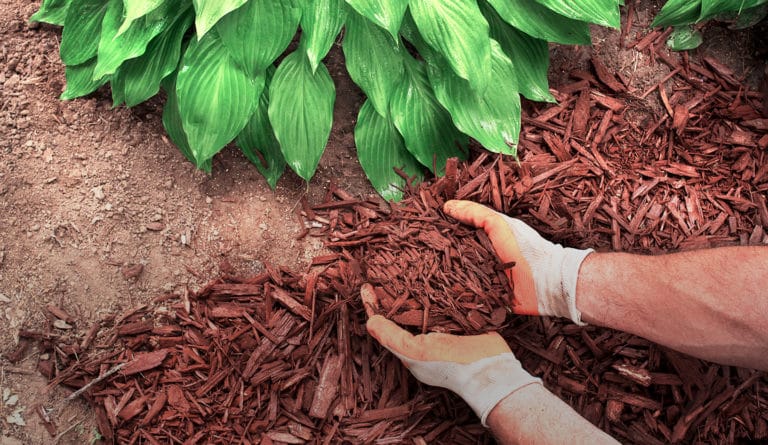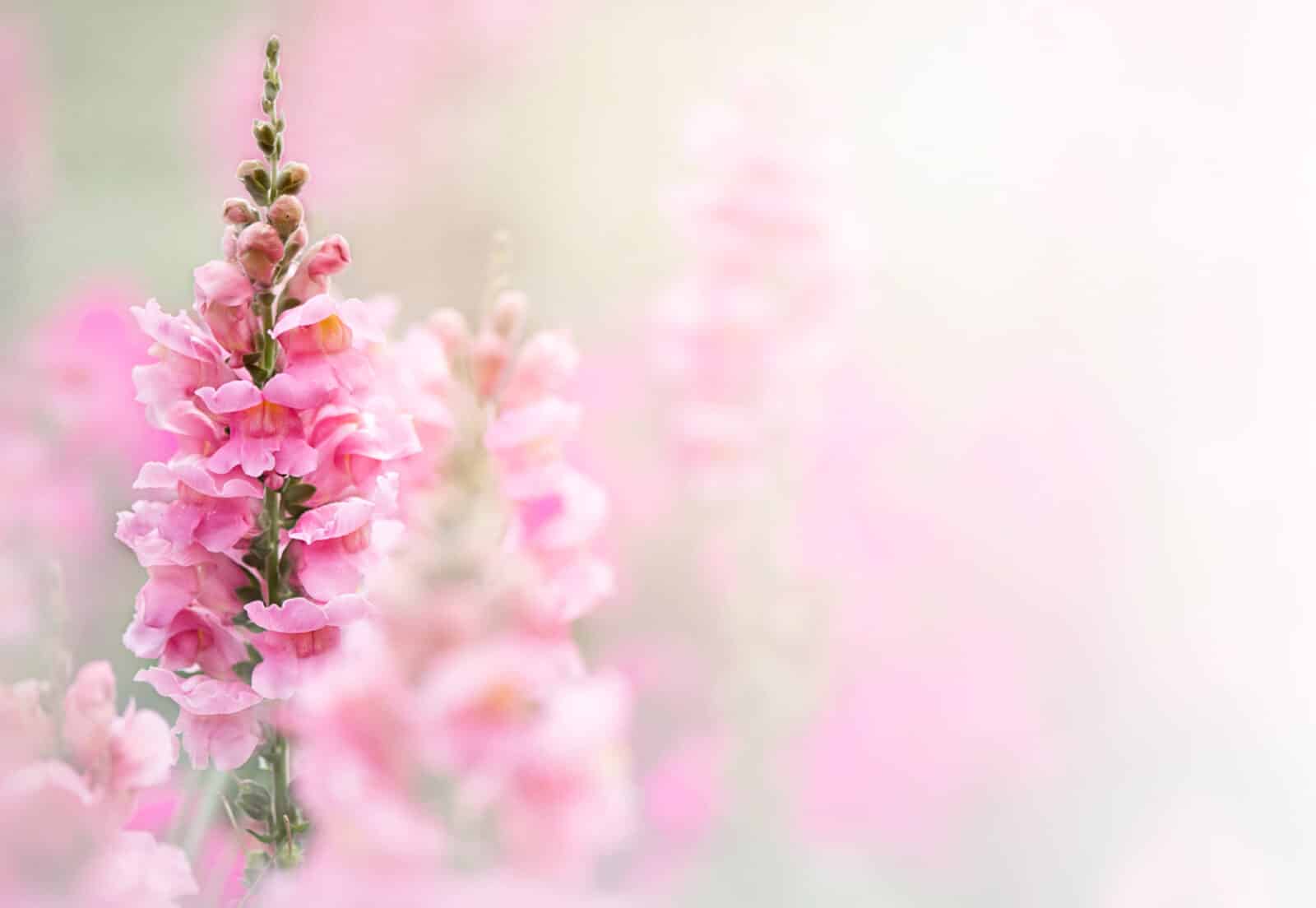
snapdragons
aka antirrhinums, dragon flowers, and dog flowers
Snapdragons are a beloved choice for cottage gardens and perennial flower beds, adding charm and beauty to any landscape. These flowers possess a unique charm with their dragon-like flower heads and a stunning range of colours including white, yellow, pink, orange, and purple.
variations
Tall snapdragons, Dwarf snapdragons, Twining snapdragons (climbing snapdragons), and Angelonia snapdragons.
light
full sun
For best blooming results, make sure they receive at least 6 hours of direct sunlight daily.
water + feeding
thirsty
Snapdragons are somewhat drought-tolerant and prefer a good drink followed by a period of dryness.
toxic
yes
While Snapdragons are safe for humans they can lead to an upset stomach for furry friends.
size
it depends
Snapdragons come in different sizes depending on the variation. On average, they grow between 1 and 3 feet tall. Dwarf varieties only reach up to 10 inches, while larger species can reach 4 feet.
pro tip
give them room to bloom
Snapdragons like to have a bit of personal space. Make sure to leave about 6 to 12 inches between each plant to provide ample space for them to expand and thrive. Plus, it can actually help prevent the spread of diseases. These aren’t wallflowers—they like a little room to show off their vibrant blooms!
fun fact
snap it open!
The name ‘Snapdragon’ comes from an old superstition that says if you hold the flower by the stem and squeeze it, its mouth will “snap” open and close. They may not actually snap at you, but it’s still a fun way to engage with these beautiful plants! So don’t be afraid to give them a gentle squeeze and watch their petals snap.
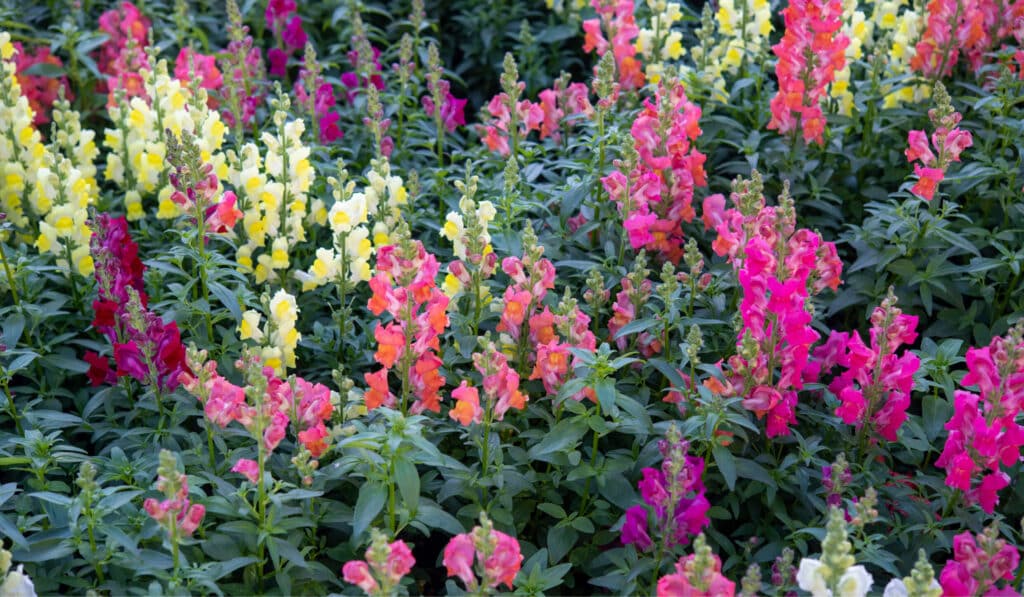
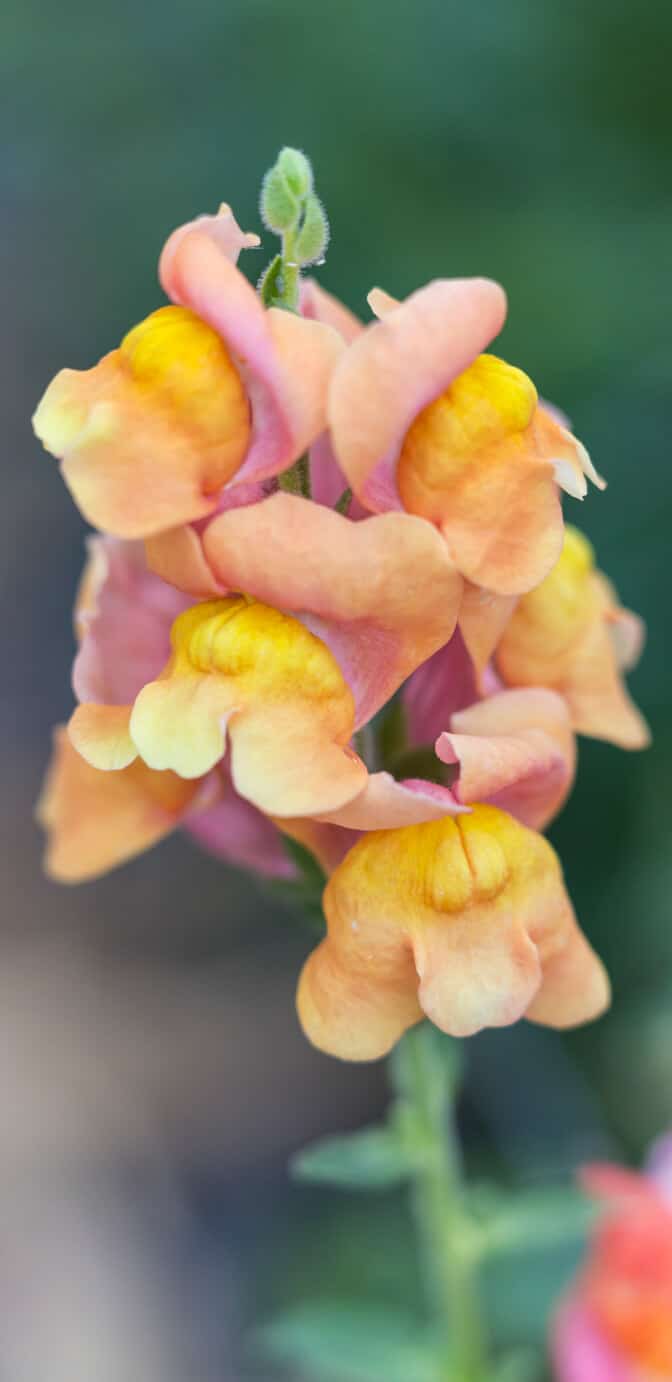
beyond the basics
-
soil and potting
Snapdragons thrive in nutrient-rich, well-draining soil like Miracle-Gro® Moisture Control® Garden Soil. For outdoor planting, choose a sunny spot with ample spacing of 6 to 12 inches. In containers, use a pot that is at least 12 inches deep and wide, providing the roots with enough space to expand and thrive. Also, make sure the pot has good drainage to keep those roots from getting waterlogged.
-
companion planting
Snapdragons are versatile plants that effortlessly blend into any garden. They complement summer blooms like petunias, lavender, and sunflowers, as well as aromatic herbs like rosemary and sage.
-
blooms
Different varieties of snapdragons have single, double, or frilly petals and come in many vibrant colours. The most common variations are tall snapdragons that feature flowers with broad petals on strong stems, dwarf snapdragons that boast delicate blooms in an array of colours on short stems, and double snapdragons which feature multiple rows of ruffled petals.
-
pest control
Snapdragons generally are resistant to pests, but it’s important to keep an eye out for aphids and thrips. If you happen to spot any of these pests, it’s recommended to employ natural methods such as using an insecticidal soap like Ortho® Bug B Gon® ECO Insecticidal Soap or rinsing the foliage thoroughly with a forceful stream of water to dislodge any potential invaders.
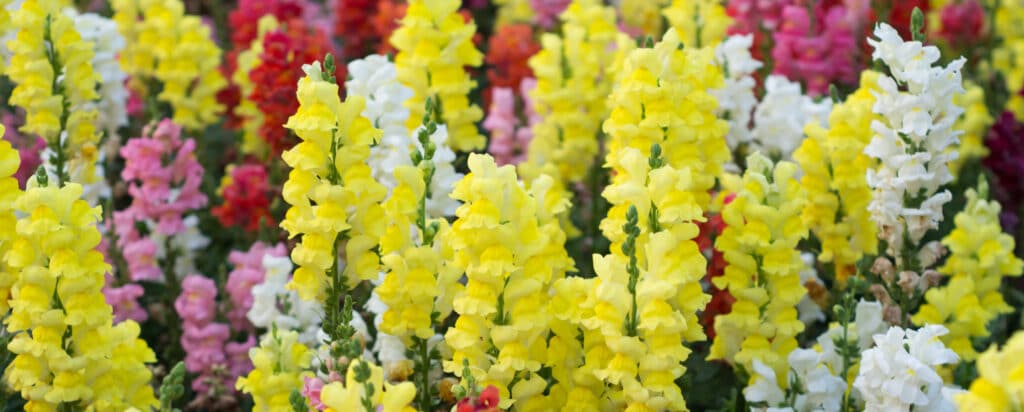
troubleshooting
-
why aren’t my snapdragons blooming enough?
Insufficient sunlight exposure or subpar fertility conditions. To ensure your Snapdragons thrive, ensure your plants receive a minimum of 6 hours of direct sunlight each day. To improve soil fertility, you can enhance it by incorporating a nutrient boost like Miracle-Gro® Water Soluble All Purpose Plant Food. This will enrich the environment for your plants and promote their growth. Also, to encourage the formation of new buds, try deadheading to clear up any withered blossoms.
-
why are my snapdragon’s leaves powdery?
Fungal disease. This tends to appear in warm and humid climates. To prevent and treat this condition, ensure adequate air circulation between plants by leaving sufficient space when planting, avoid wetting the foliage during watering sessions, and use fungicides if necessary.
-
why does it look like my snapdragons are wilting?
Over watering or under watering. Excess moisture can result in root rot, hindering your flowers’ ability to absorb essential nutrients. Conversely, a lack of moisture can cause your flowers to dry out or wither. To ensure optimal growth, carefully assess soil moisture levels and adjust watering practices accordingly.
-
why are my snapdragons falling over?
Insufficient sunlight. To address this, try moving the plant to a spot that ensures 6 hours of sunlight. Additionally, consider pruning the leggy stems and using supports such as stakes or trellises to help the stalks stand tall.

begonias
aka begoniaceae or begonia semperflorens
Begonias are popular houseplants and shaded garden beds. They have tropical/sub-tropical origins, and are known for their interesting, asymmetrical leaves. They add a bright punch of colour to a garden bed because of their bright, small flowers and variegated leaves.
variations
Wax begonias, Tuberous begonias, Cane begonias, Rhizomatous begonias, Rex begonias
light
filtered sun
Partial shade or filtered light
water + feeding
not too thirsty
Regular watering is important for healthy plants. The soil should remain moist at all times, but not too wet, as this can cause root rot. Water at the base of the plant to keep the foliage dry and prevent leaf spot and fungal diseases. For general growing purposes, apply a balanced water-soluble fertilizer once a month in the growing season. For plants grown strictly for their foliage, like angel wings, use a fertilizer that is higher in nitrogen.
toxic
somewhat
Although its most toxic parts are underground, it’s still best to keep begonias out of reach of your pets
size
mostly medium
Wax begonias: Wax begonias are typically grown as annuals, reaching 6 to 12 inches tall and wide. Tuberous begonias: They also have a larger growth habit than wax begonias, growing 12 to 18 inches tall as houseplants and up to 3 feet or more in outdoor containers. Cane begonias: Their size varies with growing conditions, from 6- to 12-inch houseplants to bushy plants up to 5 feet. Rhizomatous begonias: Sizes vary from just a few inches to large plants up to 3 feet tall and wide. Rex begonias: generally reach 12 to 18 inches tall and wide.
pro tip
happily root-bound?
Potted begonias prefer to be slightly root-bound rather than given too much room. Only repot when necessary, and preferably in spring before plants are moved outside and start actively growing. Select darker-leaved varieties or types with improved heat and sun tolerance for sunnier spots.
fun fact
cousins to pumpkins
The flower is related to pumpkins, squash, gourds, cucumbers and melons. Tuberous and wax begonias are edible and have a citrusy taste. The name Begonia honours Michel Begon, a former governor and amateur botanist.
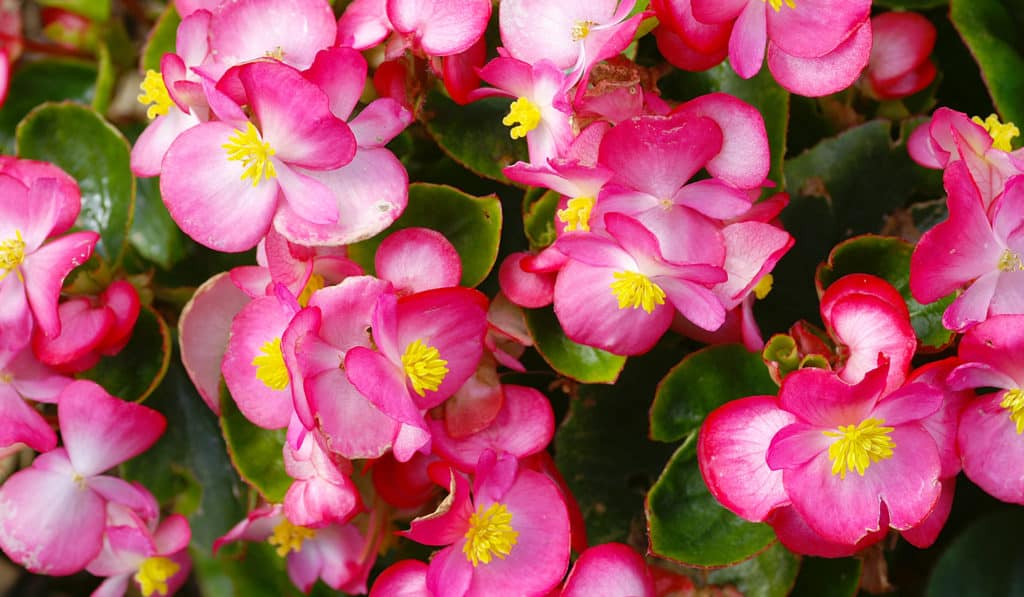
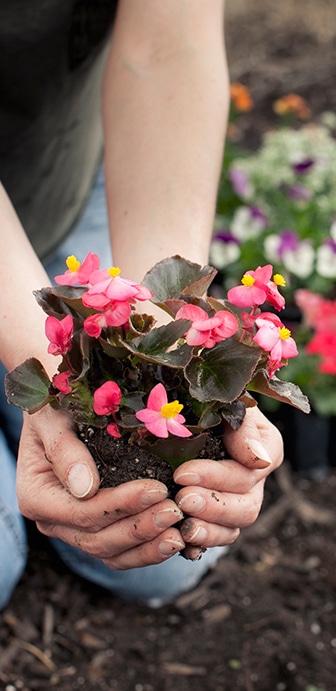
beyond the basics
-
soil & potting
All begonias like evenly moist, well-draining soil with some added organic matter. Plant wax begonia transplants 6 to 8 inches apart and others according to their mature size. Tubers can be started indoors by placing the tubers, hollow side up, 1 inch apart in a shallow tray with moist potting mix. Place the tray in a dark room and water just enough to keep the potting mix moist, but not soggy. Tubers should sprout in about 4 weeks and be moved to an area with bright light once the sprouts are about an inch tall. Only plant outdoors when there is no longer a threat of frost.
-
companion planting
Begonias look great planted together, or with cascading annuals like alyssum and lobelia. Try pairing them with Hosta or Bergenia in shade gardens.
-
blooms
When cutting back rhizomatous or wax types, make a clean, angled cut just above a leaf or flower node. To encourage fuller growth, younger plants (under 3 years) can be cut back to one or two nodes above the soil. Plants that are older should only be pruned lightly.
For cane begonias, pinch the tops when plants are about 6 inches tall to encourage bushier growth. Cut any canes that are much taller than the rest of the plant back to the soil. Remove old, brown, bare, or dead canes to the soil. Younger plants can be cut back by about 1/2.
Rex begonias require little pruning. Pinch back young plants to encourage fuller growth, and remove any leggy or bare stems as needed.
For all types, cut off spent begonia flowers about 1/2-inch below the flower to keep plants clean and healthy, as well as promote more blooms.
-
pest control
Susceptible to powdery mildew, mealybugs, spider mites, thrips, and whitefly. Stem rot and rhizome rot can be caused by overwatering and soggy soil.
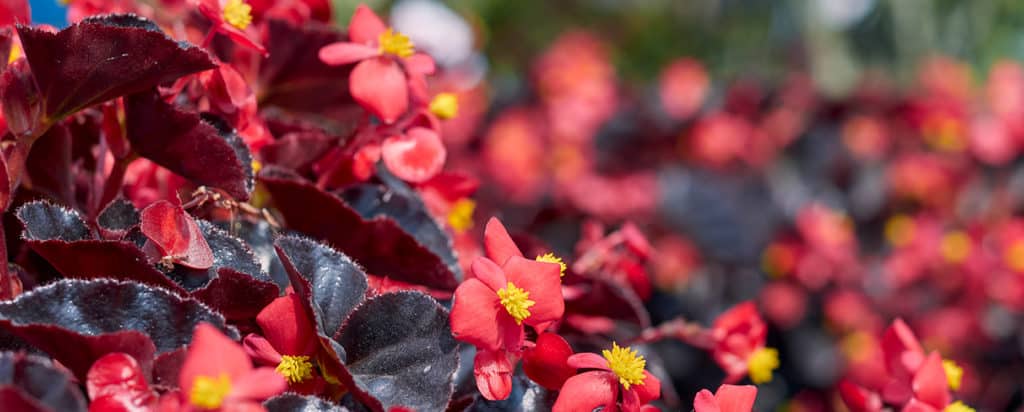
troubleshooting
-
spotted flowers?
Blooms may be damaged by improper watering. Your Begonia’s flowers are likely getting brown or transparent blotches where water drops have soaked through the petal. To prevent this, shield your petals when watering or be sure to hold the hose close to the soil versus above the plant.
-
white, powdery leaves?
This is mildew caused by a fungus that lives on the surface of your plant. Mildew will coat your Begonias in a white or gray powdery mold. Mildew will cause your Begonia’s leaves to discolour and drop off. To avoid this, be sure to allow adequate space between plants and collect any debris that falls around the base of the plant. Be sure not to overwater your plant!
-
dropping buds?
Could be caused by either over or under watering your plant, especially if they dry out completely between watering. Although tuberous begonias do best when the soil surface dries out slightly between waterings, try not to let them dry out completely. A sudden temperature change from hot to cold could also cause buds to drop off.
-
faded flowers?
Could be a result of a fungal disease that often results from poor ventilation, insufficient light or high humidity. Remove those faded flowers and be sure that your Begonias are planted in a well-ventilated area that receives adequate light, versus in a shady area. If the growing season is especially humid, gray mold may appear despite precautions. In such a case, destroy infected plant parts, and spray buds and blooms with flowable sulfur fungicide every 3 to 5 days.

begonias
aka begoniaceae or begonia semperflorens
Begonias are popular houseplants and shaded garden beds. They have tropical/sub-tropical origins, and are known for their interesting, asymmetrical leaves. They add a bright punch of colour to a garden bed because of their bright, small flowers and variegated leaves.
variations
Wax begonias, Tuberous begonias, Cane begonias, Rhizomatous begonias, Rex begonias
light
filtered sun
Partial shade or filtered light
water + feeding
not too thirsty
Regular watering is important for healthy plants. The soil should remain moist at all times, but not too wet, as this can cause root rot. Water at the base of the plant to keep the foliage dry and prevent leaf spot and fungal diseases. For general growing purposes, apply a balanced water-soluble fertilizer once a month in the growing season. For plants grown strictly for their foliage, like angel wings, use a fertilizer that is higher in nitrogen.
toxic
somewhat
Although its most toxic parts are underground, it’s still best to keep begonias out of reach of your pets
size
mostly medium
Wax begonias: Wax begonias are typically grown as annuals, reaching 6 to 12 inches tall and wide. Tuberous begonias: They also have a larger growth habit than wax begonias, growing 12 to 18 inches tall as houseplants and up to 3 feet or more in outdoor containers. Cane begonias: Their size varies with growing conditions, from 6- to 12-inch houseplants to bushy plants up to 5 feet. Rhizomatous begonias: Sizes vary from just a few inches to large plants up to 3 feet tall and wide. Rex begonias: generally reach 12 to 18 inches tall and wide.
pro tip
happily root-bound?
Potted begonias prefer to be slightly root-bound rather than given too much room. Only repot when necessary, and preferably in spring before plants are moved outside and start actively growing. Select darker-leaved varieties or types with improved heat and sun tolerance for sunnier spots.
fun fact
cousins to pumpkins
The flower is related to pumpkins, squash, gourds, cucumbers and melons. Tuberous and wax begonias are edible and have a citrusy taste. The name Begonia honours Michel Begon, a former governor and amateur botanist.
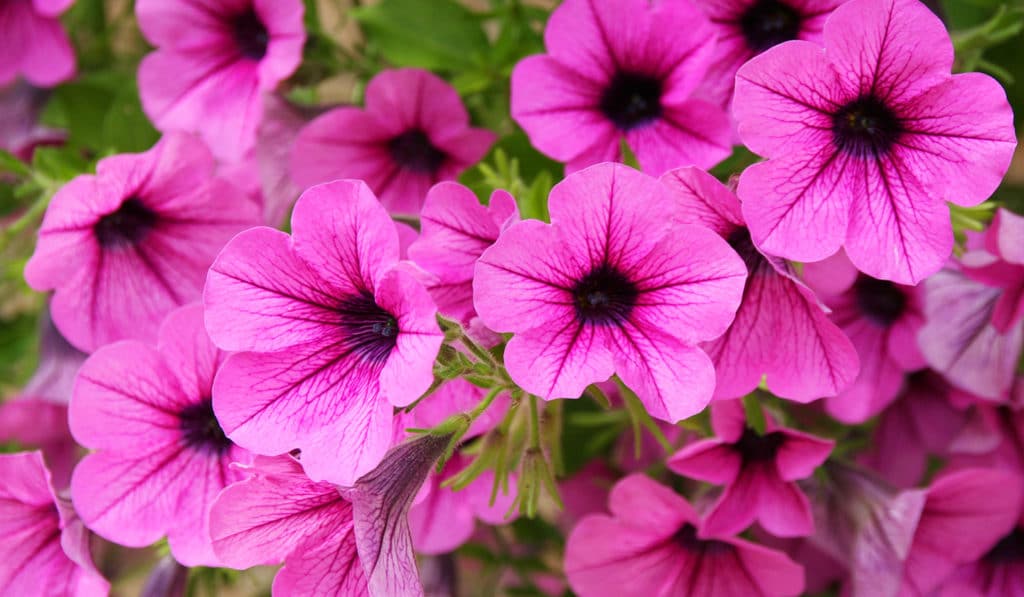

beyond the basics
-
soil & potting
All begonias like evenly moist, well-draining soil with some added organic matter. Plant wax begonia transplants 6 to 8 inches apart and others according to their mature size. Tubers can be started indoors by placing the tubers, hollow side up, 1 inch apart in a shallow tray with moist potting mix. Place the tray in a dark room and water just enough to keep the potting mix moist, but not soggy. Tubers should sprout in about 4 weeks and be moved to an area with bright light once the sprouts are about an inch tall. Only plant outdoors when there is no longer a threat of frost.
-
companion planting
Begonias look great planted together, or with cascading annuals like alyssum and lobelia. Try pairing them with Hosta or Bergenia in shade gardens.
-
blooms
When cutting back rhizomatous or wax types, make a clean, angled cut just above a leaf or flower node. To encourage fuller growth, younger plants (under 3 years) can be cut back to one or two nodes above the soil. Plants that are older should only be pruned lightly.
For cane begonias, pinch the tops when plants are about 6 inches tall to encourage bushier growth. Cut any canes that are much taller than the rest of the plant back to the soil. Remove old, brown, bare, or dead canes to the soil. Younger plants can be cut back by about 1/2.
Rex begonias require little pruning. Pinch back young plants to encourage fuller growth, and remove any leggy or bare stems as needed.
For all types, cut off spent begonia flowers about 1/2-inch below the flower to keep plants clean and healthy, as well as promote more blooms.
-
pest control
Susceptible to powdery mildew, mealybugs, spider mites, thrips, and whitefly. Stem rot and rhizome rot can be caused by overwatering and soggy soil.

troubleshooting
-
spotted flowers?
Blooms may be damaged by improper watering. Your Begonia’s flowers are likely getting brown or transparent blotches where water drops have soaked through the petal. To prevent this, shield your petals when watering or be sure to hold the hose close to the soil versus above the plant.
-
white, powdery leaves?
This is mildew caused by a fungus that lives on the surface of your plant. Mildew will coat your Begonias in a white or gray powdery mold. Mildew will cause your Begonia’s leaves to discolour and drop off. To avoid this, be sure to allow adequate space between plants and collect any debris that falls around the base of the plant. Be sure not to overwater your plant!
-
dropping buds?
Could be caused by either over or under watering your plant, especially if they dry out completely between watering. Although tuberous begonias do best when the soil surface dries out slightly between waterings, try not to let them dry out completely. A sudden temperature change from hot to cold could also cause buds to drop off.
-
faded flowers?
Could be a result of a fungal disease that often results from poor ventilation, insufficient light or high humidity. Remove those faded flowers and be sure that your Begonias are planted in a well-ventilated area that receives adequate light, versus in a shady area. If the growing season is especially humid, gray mold may appear despite precautions. In such a case, destroy infected plant parts, and spray buds and blooms with flowable sulfur fungicide every 3 to 5 days.

begonias
aka begoniaceae or begonia semperflorens
Begonias are popular houseplants and shaded garden beds. They have tropical/sub-tropical origins, and are known for their interesting, asymmetrical leaves. They add a bright punch of colour to a garden bed because of their bright, small flowers and variegated leaves.
variations
Wax begonias, Tuberous begonias, Cane begonias, Rhizomatous begonias, Rex begonias
light
filtered sun
Partial shade or filtered light
water + feeding
not too thirsty
Regular watering is important for healthy plants. The soil should remain moist at all times, but not too wet, as this can cause root rot. Water at the base of the plant to keep the foliage dry and prevent leaf spot and fungal diseases. For general growing purposes, apply a balanced water-soluble fertilizer once a month in the growing season. For plants grown strictly for their foliage, like angel wings, use a fertilizer that is higher in nitrogen.
toxic
somewhat
Although its most toxic parts are underground, it’s still best to keep begonias out of reach of your pets
size
mostly medium
Wax begonias: Wax begonias are typically grown as annuals, reaching 6 to 12 inches tall and wide. Tuberous begonias: They also have a larger growth habit than wax begonias, growing 12 to 18 inches tall as houseplants and up to 3 feet or more in outdoor containers. Cane begonias: Their size varies with growing conditions, from 6- to 12-inch houseplants to bushy plants up to 5 feet. Rhizomatous begonias: Sizes vary from just a few inches to large plants up to 3 feet tall and wide. Rex begonias: generally reach 12 to 18 inches tall and wide.
pro tip
happily root-bound?
Potted begonias prefer to be slightly root-bound rather than given too much room. Only repot when necessary, and preferably in spring before plants are moved outside and start actively growing. Select darker-leaved varieties or types with improved heat and sun tolerance for sunnier spots.
fun fact
cousins to pumpkins
The flower is related to pumpkins, squash, gourds, cucumbers and melons. Tuberous and wax begonias are edible and have a citrusy taste. The name Begonia honours Michel Begon, a former governor and amateur botanist.
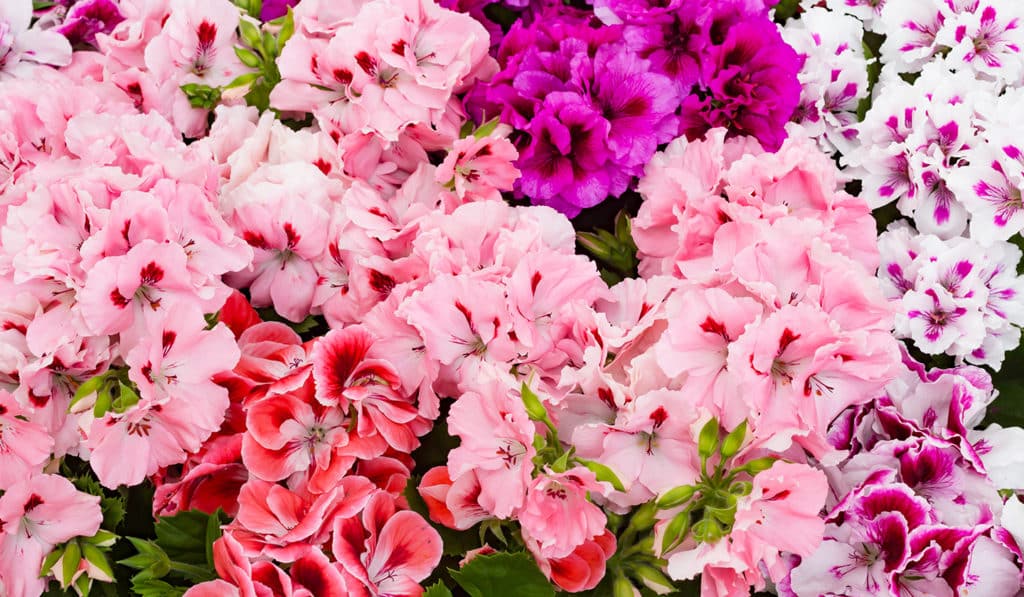

beyond the basics
-
soil & potting
All begonias like evenly moist, well-draining soil with some added organic matter. Plant wax begonia transplants 6 to 8 inches apart and others according to their mature size. Tubers can be started indoors by placing the tubers, hollow side up, 1 inch apart in a shallow tray with moist potting mix. Place the tray in a dark room and water just enough to keep the potting mix moist, but not soggy. Tubers should sprout in about 4 weeks and be moved to an area with bright light once the sprouts are about an inch tall. Only plant outdoors when there is no longer a threat of frost.
-
companion planting
Begonias look great planted together, or with cascading annuals like alyssum and lobelia. Try pairing them with Hosta or Bergenia in shade gardens.
-
blooms
When cutting back rhizomatous or wax types, make a clean, angled cut just above a leaf or flower node. To encourage fuller growth, younger plants (under 3 years) can be cut back to one or two nodes above the soil. Plants that are older should only be pruned lightly.
For cane begonias, pinch the tops when plants are about 6 inches tall to encourage bushier growth. Cut any canes that are much taller than the rest of the plant back to the soil. Remove old, brown, bare, or dead canes to the soil. Younger plants can be cut back by about 1/2.
Rex begonias require little pruning. Pinch back young plants to encourage fuller growth, and remove any leggy or bare stems as needed.
For all types, cut off spent begonia flowers about 1/2-inch below the flower to keep plants clean and healthy, as well as promote more blooms.
-
pest control
Susceptible to powdery mildew, mealybugs, spider mites, thrips, and whitefly. Stem rot and rhizome rot can be caused by overwatering and soggy soil.
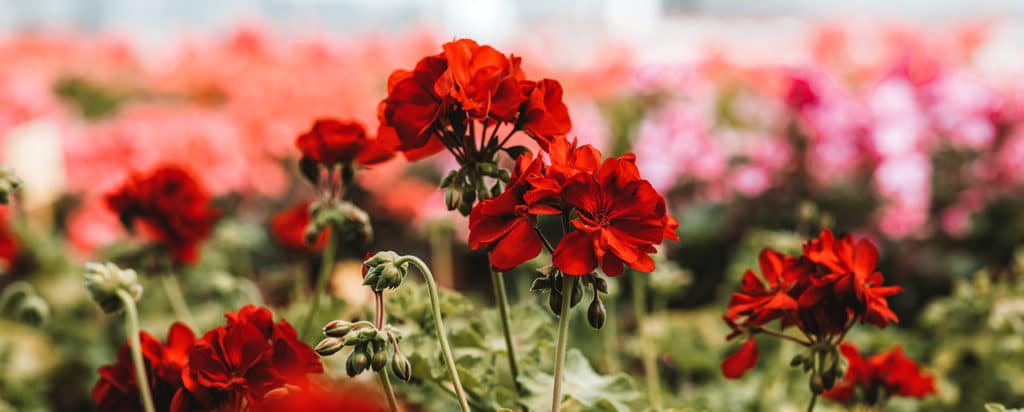
troubleshooting
-
spotted flowers?
Blooms may be damaged by improper watering. Your Begonia’s flowers are likely getting brown or transparent blotches where water drops have soaked through the petal. To prevent this, shield your petals when watering or be sure to hold the hose close to the soil versus above the plant.
-
white, powdery leaves?
This is mildew caused by a fungus that lives on the surface of your plant. Mildew will coat your Begonias in a white or gray powdery mold. Mildew will cause your Begonia’s leaves to discolour and drop off. To avoid this, be sure to allow adequate space between plants and collect any debris that falls around the base of the plant. Be sure not to overwater your plant!
-
dropping buds?
Could be caused by either over or under watering your plant, especially if they dry out completely between watering. Although tuberous begonias do best when the soil surface dries out slightly between waterings, try not to let them dry out completely. A sudden temperature change from hot to cold could also cause buds to drop off.
-
faded flowers?
Could be a result of a fungal disease that often results from poor ventilation, insufficient light or high humidity. Remove those faded flowers and be sure that your Begonias are planted in a well-ventilated area that receives adequate light, versus in a shady area. If the growing season is especially humid, gray mold may appear despite precautions. In such a case, destroy infected plant parts, and spray buds and blooms with flowable sulfur fungicide every 3 to 5 days.

begonias
aka begoniaceae or begonia semperflorens
Begonias are popular houseplants and shaded garden beds. They have tropical/sub-tropical origins, and are known for their interesting, asymmetrical leaves. They add a bright punch of colour to a garden bed because of their bright, small flowers and variegated leaves.
variations
Wax begonias, Tuberous begonias, Cane begonias, Rhizomatous begonias, Rex begonias
light
filtered sun
Partial shade or filtered light
water + feeding
not too thirsty
Regular watering is important for healthy plants. The soil should remain moist at all times, but not too wet, as this can cause root rot. Water at the base of the plant to keep the foliage dry and prevent leaf spot and fungal diseases. For general growing purposes, apply a balanced water-soluble fertilizer once a month in the growing season. For plants grown strictly for their foliage, like angel wings, use a fertilizer that is higher in nitrogen.
toxic
somewhat
Although its most toxic parts are underground, it’s still best to keep begonias out of reach of your pets
size
mostly medium
Wax begonias: Wax begonias are typically grown as annuals, reaching 6 to 12 inches tall and wide. Tuberous begonias: They also have a larger growth habit than wax begonias, growing 12 to 18 inches tall as houseplants and up to 3 feet or more in outdoor containers. Cane begonias: Their size varies with growing conditions, from 6- to 12-inch houseplants to bushy plants up to 5 feet. Rhizomatous begonias: Sizes vary from just a few inches to large plants up to 3 feet tall and wide. Rex begonias: generally reach 12 to 18 inches tall and wide.
pro tip
happily root-bound?
Potted begonias prefer to be slightly root-bound rather than given too much room. Only repot when necessary, and preferably in spring before plants are moved outside and start actively growing. Select darker-leaved varieties or types with improved heat and sun tolerance for sunnier spots.
fun fact
cousins to pumpkins
The flower is related to pumpkins, squash, gourds, cucumbers and melons. Tuberous and wax begonias are edible and have a citrusy taste. The name Begonia honours Michel Begon, a former governor and amateur botanist.
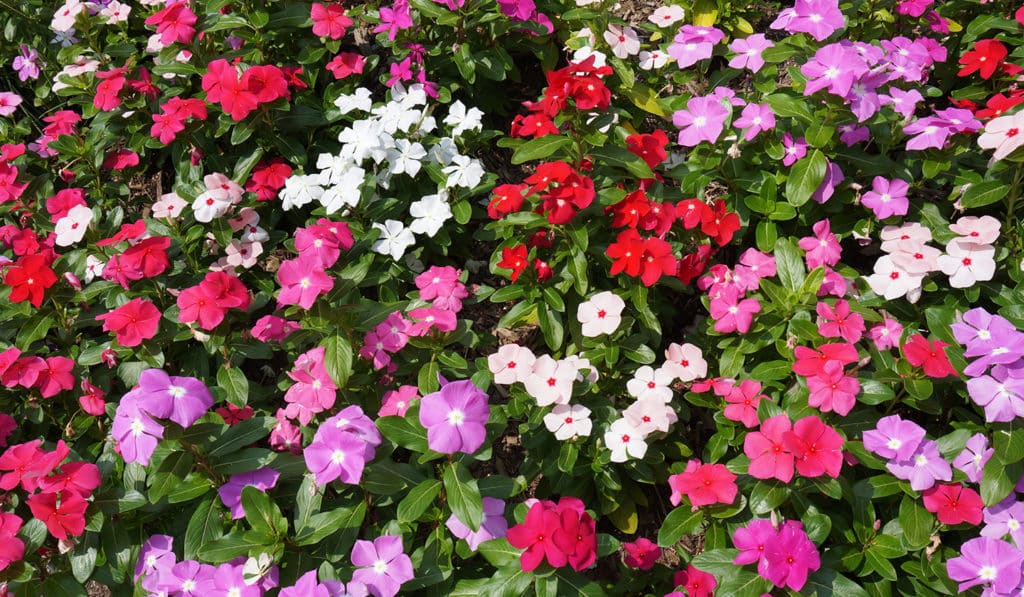

beyond the basics
-
soil & potting
All begonias like evenly moist, well-draining soil with some added organic matter. Plant wax begonia transplants 6 to 8 inches apart and others according to their mature size. Tubers can be started indoors by placing the tubers, hollow side up, 1 inch apart in a shallow tray with moist potting mix. Place the tray in a dark room and water just enough to keep the potting mix moist, but not soggy. Tubers should sprout in about 4 weeks and be moved to an area with bright light once the sprouts are about an inch tall. Only plant outdoors when there is no longer a threat of frost.
-
companion planting
Begonias look great planted together, or with cascading annuals like alyssum and lobelia. Try pairing them with Hosta or Bergenia in shade gardens.
-
blooms
When cutting back rhizomatous or wax types, make a clean, angled cut just above a leaf or flower node. To encourage fuller growth, younger plants (under 3 years) can be cut back to one or two nodes above the soil. Plants that are older should only be pruned lightly.
For cane begonias, pinch the tops when plants are about 6 inches tall to encourage bushier growth. Cut any canes that are much taller than the rest of the plant back to the soil. Remove old, brown, bare, or dead canes to the soil. Younger plants can be cut back by about 1/2.
Rex begonias require little pruning. Pinch back young plants to encourage fuller growth, and remove any leggy or bare stems as needed.
For all types, cut off spent begonia flowers about 1/2-inch below the flower to keep plants clean and healthy, as well as promote more blooms.
-
pest control
Susceptible to powdery mildew, mealybugs, spider mites, thrips, and whitefly. Stem rot and rhizome rot can be caused by overwatering and soggy soil.
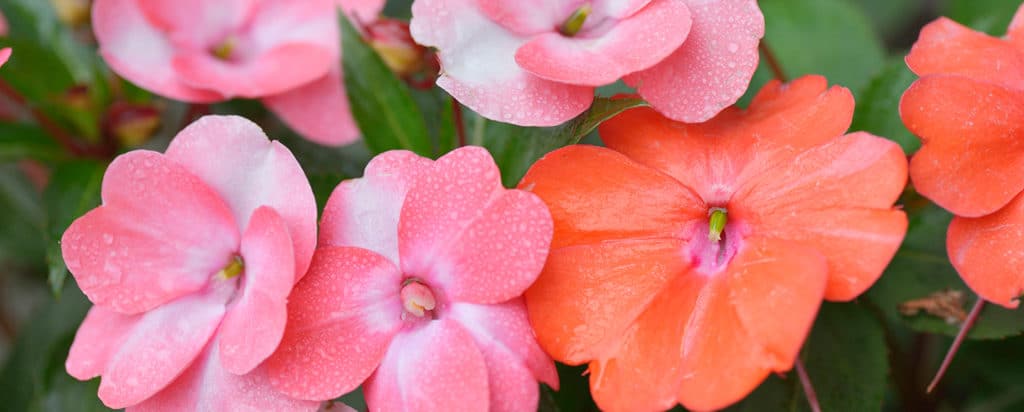
troubleshooting
-
spotted flowers?
Blooms may be damaged by improper watering. Your Begonia’s flowers are likely getting brown or transparent blotches where water drops have soaked through the petal. To prevent this, shield your petals when watering or be sure to hold the hose close to the soil versus above the plant.
-
white, powdery leaves?
This is mildew caused by a fungus that lives on the surface of your plant. Mildew will coat your Begonias in a white or gray powdery mold. Mildew will cause your Begonia’s leaves to discolour and drop off. To avoid this, be sure to allow adequate space between plants and collect any debris that falls around the base of the plant. Be sure not to overwater your plant!
-
dropping buds?
Could be caused by either over or under watering your plant, especially if they dry out completely between watering. Although tuberous begonias do best when the soil surface dries out slightly between waterings, try not to let them dry out completely. A sudden temperature change from hot to cold could also cause buds to drop off.
-
faded flowers?
Could be a result of a fungal disease that often results from poor ventilation, insufficient light or high humidity. Remove those faded flowers and be sure that your Begonias are planted in a well-ventilated area that receives adequate light, versus in a shady area. If the growing season is especially humid, gray mold may appear despite precautions. In such a case, destroy infected plant parts, and spray buds and blooms with flowable sulfur fungicide every 3 to 5 days.

begonias
aka begoniaceae or begonia semperflorens
Begonias are popular houseplants and shaded garden beds. They have tropical/sub-tropical origins, and are known for their interesting, asymmetrical leaves. They add a bright punch of colour to a garden bed because of their bright, small flowers and variegated leaves.
variations
Wax begonias, Tuberous begonias, Cane begonias, Rhizomatous begonias, Rex begonias
light
filtered sun
Partial shade or filtered light
water + feeding
not too thirsty
Regular watering is important for healthy plants. The soil should remain moist at all times, but not too wet, as this can cause root rot. Water at the base of the plant to keep the foliage dry and prevent leaf spot and fungal diseases. For general growing purposes, apply a balanced water-soluble fertilizer once a month in the growing season. For plants grown strictly for their foliage, like angel wings, use a fertilizer that is higher in nitrogen.
toxic
somewhat
Although its most toxic parts are underground, it’s still best to keep begonias out of reach of your pets
size
mostly medium
Wax begonias: Wax begonias are typically grown as annuals, reaching 6 to 12 inches tall and wide. Tuberous begonias: They also have a larger growth habit than wax begonias, growing 12 to 18 inches tall as houseplants and up to 3 feet or more in outdoor containers. Cane begonias: Their size varies with growing conditions, from 6- to 12-inch houseplants to bushy plants up to 5 feet. Rhizomatous begonias: Sizes vary from just a few inches to large plants up to 3 feet tall and wide. Rex begonias: generally reach 12 to 18 inches tall and wide.
pro tip
happily root-bound?
Potted begonias prefer to be slightly root-bound rather than given too much room. Only repot when necessary, and preferably in spring before plants are moved outside and start actively growing. Select darker-leaved varieties or types with improved heat and sun tolerance for sunnier spots.
fun fact
cousins to pumpkins
The flower is related to pumpkins, squash, gourds, cucumbers and melons. Tuberous and wax begonias are edible and have a citrusy taste. The name Begonia honours Michel Begon, a former governor and amateur botanist.
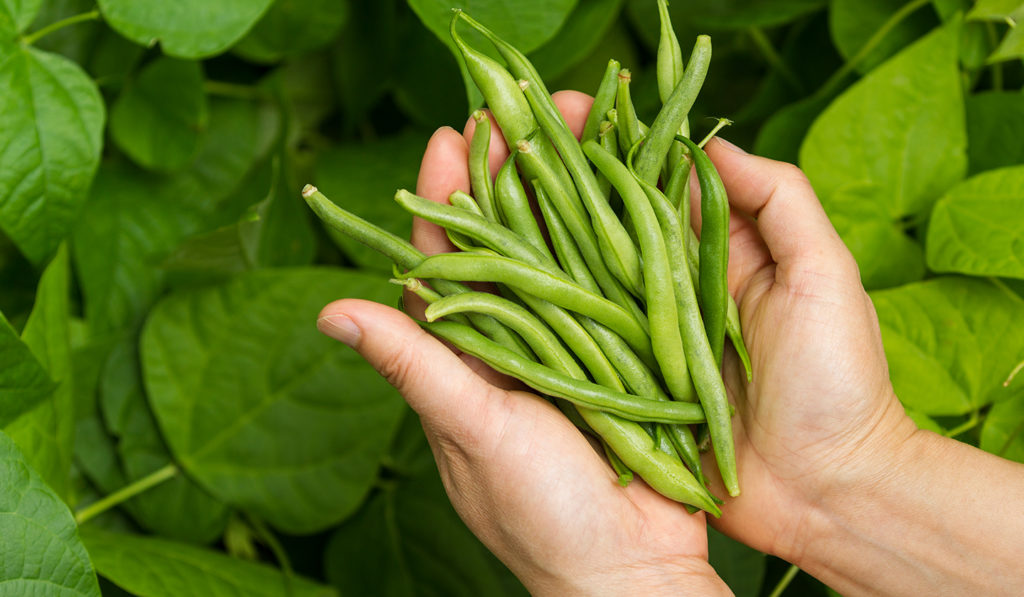

beyond the basics
-
soil & potting
All begonias like evenly moist, well-draining soil with some added organic matter. Plant wax begonia transplants 6 to 8 inches apart and others according to their mature size. Tubers can be started indoors by placing the tubers, hollow side up, 1 inch apart in a shallow tray with moist potting mix. Place the tray in a dark room and water just enough to keep the potting mix moist, but not soggy. Tubers should sprout in about 4 weeks and be moved to an area with bright light once the sprouts are about an inch tall. Only plant outdoors when there is no longer a threat of frost.
-
companion planting
Begonias look great planted together, or with cascading annuals like alyssum and lobelia. Try pairing them with Hosta or Bergenia in shade gardens.
-
blooms
When cutting back rhizomatous or wax types, make a clean, angled cut just above a leaf or flower node. To encourage fuller growth, younger plants (under 3 years) can be cut back to one or two nodes above the soil. Plants that are older should only be pruned lightly.
For cane begonias, pinch the tops when plants are about 6 inches tall to encourage bushier growth. Cut any canes that are much taller than the rest of the plant back to the soil. Remove old, brown, bare, or dead canes to the soil. Younger plants can be cut back by about 1/2.
Rex begonias require little pruning. Pinch back young plants to encourage fuller growth, and remove any leggy or bare stems as needed.
For all types, cut off spent begonia flowers about 1/2-inch below the flower to keep plants clean and healthy, as well as promote more blooms.
-
pest control
Susceptible to powdery mildew, mealybugs, spider mites, thrips, and whitefly. Stem rot and rhizome rot can be caused by overwatering and soggy soil.
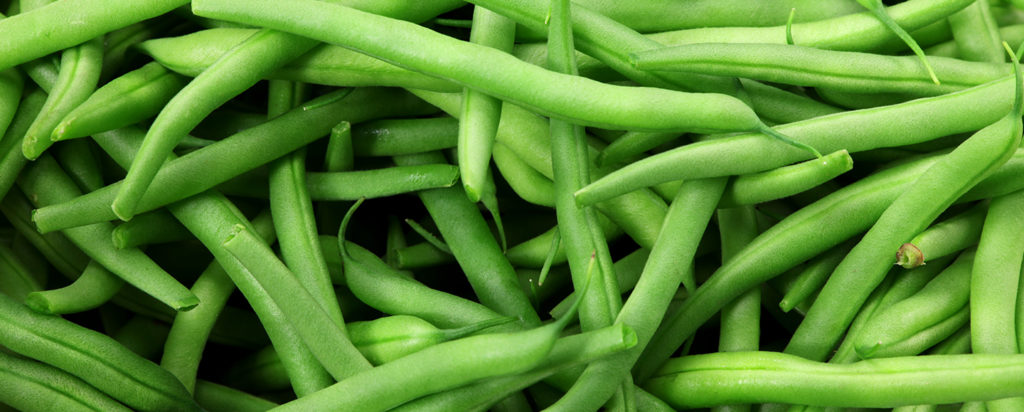
troubleshooting
-
spotted flowers?
Blooms may be damaged by improper watering. Your Begonia’s flowers are likely getting brown or transparent blotches where water drops have soaked through the petal. To prevent this, shield your petals when watering or be sure to hold the hose close to the soil versus above the plant.
-
white, powdery leaves?
This is mildew caused by a fungus that lives on the surface of your plant. Mildew will coat your Begonias in a white or gray powdery mold. Mildew will cause your Begonia’s leaves to discolour and drop off. To avoid this, be sure to allow adequate space between plants and collect any debris that falls around the base of the plant. Be sure not to overwater your plant!
-
dropping buds?
Could be caused by either over or under watering your plant, especially if they dry out completely between watering. Although tuberous begonias do best when the soil surface dries out slightly between waterings, try not to let them dry out completely. A sudden temperature change from hot to cold could also cause buds to drop off.
-
faded flowers?
Could be a result of a fungal disease that often results from poor ventilation, insufficient light or high humidity. Remove those faded flowers and be sure that your Begonias are planted in a well-ventilated area that receives adequate light, versus in a shady area. If the growing season is especially humid, gray mold may appear despite precautions. In such a case, destroy infected plant parts, and spray buds and blooms with flowable sulfur fungicide every 3 to 5 days.

begonias
aka begoniaceae or begonia semperflorens
Begonias are popular houseplants and shaded garden beds. They have tropical/sub-tropical origins, and are known for their interesting, asymmetrical leaves. They add a bright punch of colour to a garden bed because of their bright, small flowers and variegated leaves.
variations
Wax begonias, Tuberous begonias, Cane begonias, Rhizomatous begonias, Rex begonias
light
filtered sun
Partial shade or filtered light
water + feeding
not too thirsty
Regular watering is important for healthy plants. The soil should remain moist at all times, but not too wet, as this can cause root rot. Water at the base of the plant to keep the foliage dry and prevent leaf spot and fungal diseases. For general growing purposes, apply a balanced water-soluble fertilizer once a month in the growing season. For plants grown strictly for their foliage, like angel wings, use a fertilizer that is higher in nitrogen.
toxic
somewhat
Although its most toxic parts are underground, it’s still best to keep begonias out of reach of your pets
size
mostly medium
Wax begonias: Wax begonias are typically grown as annuals, reaching 6 to 12 inches tall and wide. Tuberous begonias: They also have a larger growth habit than wax begonias, growing 12 to 18 inches tall as houseplants and up to 3 feet or more in outdoor containers. Cane begonias: Their size varies with growing conditions, from 6- to 12-inch houseplants to bushy plants up to 5 feet. Rhizomatous begonias: Sizes vary from just a few inches to large plants up to 3 feet tall and wide. Rex begonias: generally reach 12 to 18 inches tall and wide.
pro tip
happily root-bound?
Potted begonias prefer to be slightly root-bound rather than given too much room. Only repot when necessary, and preferably in spring before plants are moved outside and start actively growing. Select darker-leaved varieties or types with improved heat and sun tolerance for sunnier spots.
fun fact
cousins to pumpkins
The flower is related to pumpkins, squash, gourds, cucumbers and melons. Tuberous and wax begonias are edible and have a citrusy taste. The name Begonia honours Michel Begon, a former governor and amateur botanist.
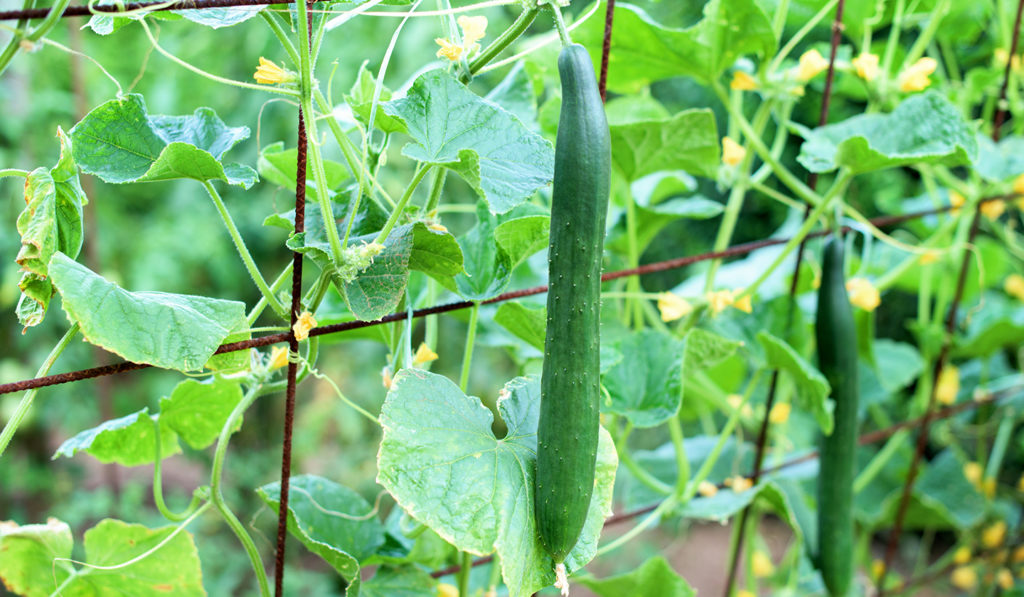

beyond the basics
-
soil & potting
All begonias like evenly moist, well-draining soil with some added organic matter. Plant wax begonia transplants 6 to 8 inches apart and others according to their mature size. Tubers can be started indoors by placing the tubers, hollow side up, 1 inch apart in a shallow tray with moist potting mix. Place the tray in a dark room and water just enough to keep the potting mix moist, but not soggy. Tubers should sprout in about 4 weeks and be moved to an area with bright light once the sprouts are about an inch tall. Only plant outdoors when there is no longer a threat of frost.
-
companion planting
Begonias look great planted together, or with cascading annuals like alyssum and lobelia. Try pairing them with Hosta or Bergenia in shade gardens.
-
blooms
When cutting back rhizomatous or wax types, make a clean, angled cut just above a leaf or flower node. To encourage fuller growth, younger plants (under 3 years) can be cut back to one or two nodes above the soil. Plants that are older should only be pruned lightly.
For cane begonias, pinch the tops when plants are about 6 inches tall to encourage bushier growth. Cut any canes that are much taller than the rest of the plant back to the soil. Remove old, brown, bare, or dead canes to the soil. Younger plants can be cut back by about 1/2.
Rex begonias require little pruning. Pinch back young plants to encourage fuller growth, and remove any leggy or bare stems as needed.
For all types, cut off spent begonia flowers about 1/2-inch below the flower to keep plants clean and healthy, as well as promote more blooms.
-
pest control
Susceptible to powdery mildew, mealybugs, spider mites, thrips, and whitefly. Stem rot and rhizome rot can be caused by overwatering and soggy soil.
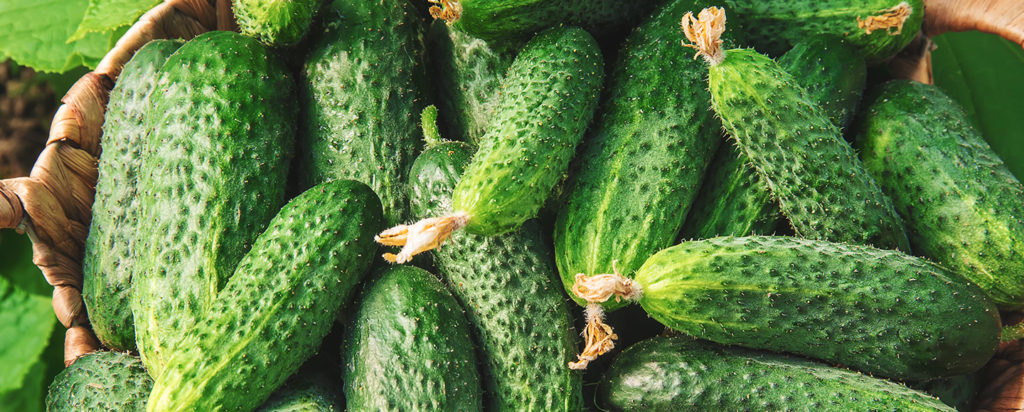
troubleshooting
-
spotted flowers?
Blooms may be damaged by improper watering. Your Begonia’s flowers are likely getting brown or transparent blotches where water drops have soaked through the petal. To prevent this, shield your petals when watering or be sure to hold the hose close to the soil versus above the plant.
-
white, powdery leaves?
This is mildew caused by a fungus that lives on the surface of your plant. Mildew will coat your Begonias in a white or gray powdery mold. Mildew will cause your Begonia’s leaves to discolour and drop off. To avoid this, be sure to allow adequate space between plants and collect any debris that falls around the base of the plant. Be sure not to overwater your plant!
-
dropping buds?
Could be caused by either over or under watering your plant, especially if they dry out completely between watering. Although tuberous begonias do best when the soil surface dries out slightly between waterings, try not to let them dry out completely. A sudden temperature change from hot to cold could also cause buds to drop off.
-
faded flowers?
Could be a result of a fungal disease that often results from poor ventilation, insufficient light or high humidity. Remove those faded flowers and be sure that your Begonias are planted in a well-ventilated area that receives adequate light, versus in a shady area. If the growing season is especially humid, gray mold may appear despite precautions. In such a case, destroy infected plant parts, and spray buds and blooms with flowable sulfur fungicide every 3 to 5 days.

begonias
aka begoniaceae or begonia semperflorens
Begonias are popular houseplants and shaded garden beds. They have tropical/sub-tropical origins, and are known for their interesting, asymmetrical leaves. They add a bright punch of colour to a garden bed because of their bright, small flowers and variegated leaves.
variations
Wax begonias, Tuberous begonias, Cane begonias, Rhizomatous begonias, Rex begonias
light
filtered sun
Partial shade or filtered light
water + feeding
not too thirsty
Regular watering is important for healthy plants. The soil should remain moist at all times, but not too wet, as this can cause root rot. Water at the base of the plant to keep the foliage dry and prevent leaf spot and fungal diseases. For general growing purposes, apply a balanced water-soluble fertilizer once a month in the growing season. For plants grown strictly for their foliage, like angel wings, use a fertilizer that is higher in nitrogen.
toxic
somewhat
Although its most toxic parts are underground, it’s still best to keep begonias out of reach of your pets
size
mostly medium
Wax begonias: Wax begonias are typically grown as annuals, reaching 6 to 12 inches tall and wide. Tuberous begonias: They also have a larger growth habit than wax begonias, growing 12 to 18 inches tall as houseplants and up to 3 feet or more in outdoor containers. Cane begonias: Their size varies with growing conditions, from 6- to 12-inch houseplants to bushy plants up to 5 feet. Rhizomatous begonias: Sizes vary from just a few inches to large plants up to 3 feet tall and wide. Rex begonias: generally reach 12 to 18 inches tall and wide.
pro tip
happily root-bound?
Potted begonias prefer to be slightly root-bound rather than given too much room. Only repot when necessary, and preferably in spring before plants are moved outside and start actively growing. Select darker-leaved varieties or types with improved heat and sun tolerance for sunnier spots.
fun fact
cousins to pumpkins
The flower is related to pumpkins, squash, gourds, cucumbers and melons. Tuberous and wax begonias are edible and have a citrusy taste. The name Begonia honours Michel Begon, a former governor and amateur botanist.
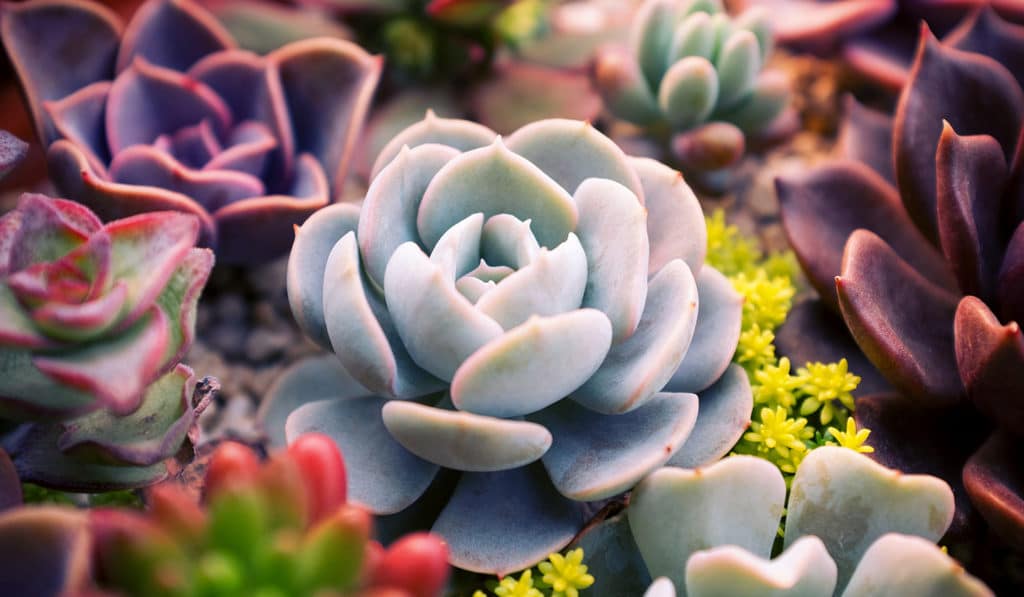
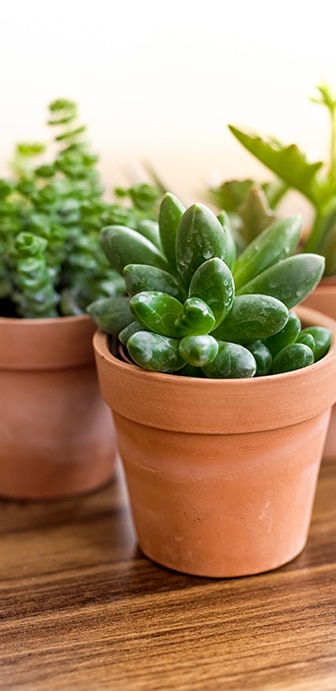
beyond the basics
-
soil & potting
These desert dwellers prefer a light, well-draining potting soil like Miracle-Gro Cactus, Palm and Succulent Potting Mix. Or, use regular potting soil and add some potting sand or perlite. A layer of sand on the top will help prevent rot. Ensure the pot has good drainage and aloe should never sit in water. Empty drainage trays if you see water collecting.
-
when to repot
Repot every 1 to 2 years in the Spring, especially with younger plants. Increase pot diameter by 2 inches every time. Want them to stay cute and little? You can stunt the growth by root trimming. In later years you can replace the top couple inches of soil instead of completely repotting.
-
propagation
Making new succulent plant babies is easy. In fact many propagate on their own. You will notice little mini versions starting grow. These “pups” can be gently separated potted as a new plant. If you’re not getting pups, remove a leaf, let it dry for a couple of days and place it on some moist soil. It should sprout roots, and voila! You have an ultra mini plant.
-
pest control
Succulents don’t typically suffer from pests, but they can sometimes get bugs. Gnats are most likely. Inspect those juicy little leaves regularly. Check out our Pest control section in Plant 101 for how to identify and deal with pests on your plant!
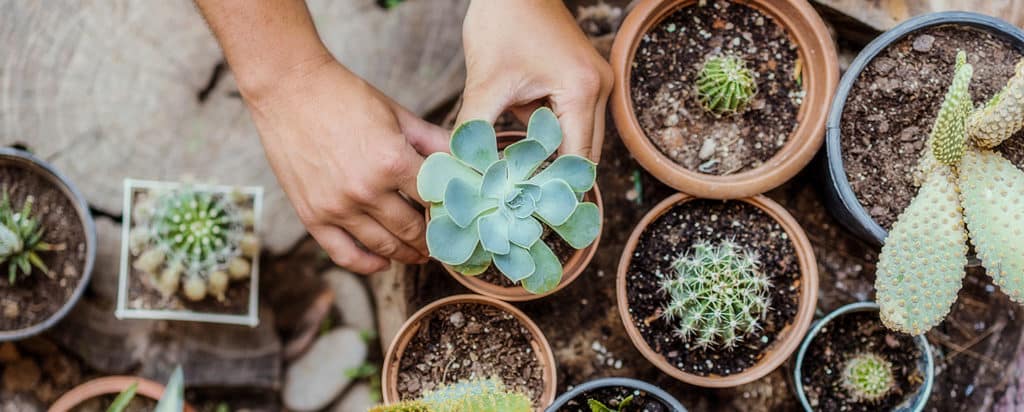
troubleshooting
-
why are the eaves turning brown, red or reddish brown?
A couple of possibilities. Maybe too much direct summer sun. Or possibly overwatering or root damage. First, moving your plant to a still-bright but less sun-blasted spot. Reduce the watering and follow our watering instructions above. If your succulent buddy still doesn’t bounce back, check for root damage.
-
what’s causing these dark spots? brown or mushy leaves?
Almost certainly too much water. This problem is no big deal if you catch it early. First, stop watering! Let’s dry out that soil. Check your pot’s drainage. Does it have a hole that allows excess water to escape? Help things dry by poking holes in the soil. This will get oxygen to the roots. You can also put the pot (with drainage holes) in a tray that’s lined with a layer of dry soil. It acts like a sponge to draw out extra moisture. Now, let’s check for root rot. Dig down and cut out any that look affected. If things are really bad, consider repotting entirely with new soil. Moving forward, water only when the soil is totally dry and make sure you water the soil, not the leaves. Water can collect between the leaves at its base, and start to rot. A thin layer of sand on top of the soil can reduce pooling water up top.
For more information check out our Plant 101 section.
-
pale or yellowing leaves?
Not enough light and/or overwatering. If the whole plant has yellowed or gone pale, it definitely needs more light. Move your friend to a brighter spot and resist the urge to overwater. Let the top two inches of soil get dry before watering again.
-
ew, what’s with the shrunken, wrinkled leaves?
Your plant needs a drink. Underwatering a succulent is hard to do, but it does happen. Give small amounts of water for three days in a row. Make sure you do this at soil level, not poured on the leaves. This is the ONE TIME it’s okay to do a little misting. A little does a lot. Resist the urge to water all at once! Your friend will plump up in a few days.
-
why isn’t my succulent growing?
Not enough light. It takes a lot of bright (mostly indirect) light to get succulents growing. If you’re not noticing any growth, or the new growth looks pale, it’s time to move to brighter spot. You may need slightly more frequent watering after the move. Note, succulents grow in slow motion at the best of times, so a little patience goes a long way.

begonias
aka begoniaceae or begonia semperflorens
Begonias are popular houseplants and shaded garden beds. They have tropical/sub-tropical origins, and are known for their interesting, asymmetrical leaves. They add a bright punch of colour to a garden bed because of their bright, small flowers and variegated leaves.
variations
Wax begonias, Tuberous begonias, Cane begonias, Rhizomatous begonias, Rex begonias
light
filtered sun
Partial shade or filtered light
water + feeding
not too thirsty
Regular watering is important for healthy plants. The soil should remain moist at all times, but not too wet, as this can cause root rot. Water at the base of the plant to keep the foliage dry and prevent leaf spot and fungal diseases. For general growing purposes, apply a balanced water-soluble fertilizer once a month in the growing season. For plants grown strictly for their foliage, like angel wings, use a fertilizer that is higher in nitrogen.
toxic
somewhat
Although its most toxic parts are underground, it’s still best to keep begonias out of reach of your pets
size
mostly medium
Wax begonias: Wax begonias are typically grown as annuals, reaching 6 to 12 inches tall and wide. Tuberous begonias: They also have a larger growth habit than wax begonias, growing 12 to 18 inches tall as houseplants and up to 3 feet or more in outdoor containers. Cane begonias: Their size varies with growing conditions, from 6- to 12-inch houseplants to bushy plants up to 5 feet. Rhizomatous begonias: Sizes vary from just a few inches to large plants up to 3 feet tall and wide. Rex begonias: generally reach 12 to 18 inches tall and wide.
pro tip
happily root-bound?
Potted begonias prefer to be slightly root-bound rather than given too much room. Only repot when necessary, and preferably in spring before plants are moved outside and start actively growing. Select darker-leaved varieties or types with improved heat and sun tolerance for sunnier spots.
fun fact
cousins to pumpkins
The flower is related to pumpkins, squash, gourds, cucumbers and melons. Tuberous and wax begonias are edible and have a citrusy taste. The name Begonia honours Michel Begon, a former governor and amateur botanist.
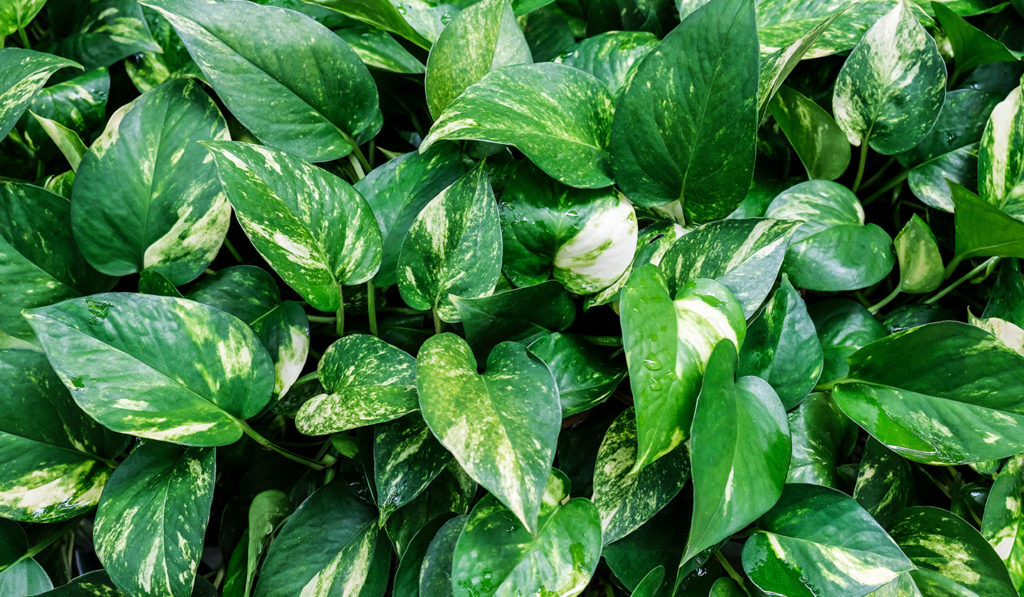

beyond the basics
-
soil & potting
All begonias like evenly moist, well-draining soil with some added organic matter. Plant wax begonia transplants 6 to 8 inches apart and others according to their mature size. Tubers can be started indoors by placing the tubers, hollow side up, 1 inch apart in a shallow tray with moist potting mix. Place the tray in a dark room and water just enough to keep the potting mix moist, but not soggy. Tubers should sprout in about 4 weeks and be moved to an area with bright light once the sprouts are about an inch tall. Only plant outdoors when there is no longer a threat of frost.
-
companion planting
Begonias look great planted together, or with cascading annuals like alyssum and lobelia. Try pairing them with Hosta or Bergenia in shade gardens.
-
blooms
When cutting back rhizomatous or wax types, make a clean, angled cut just above a leaf or flower node. To encourage fuller growth, younger plants (under 3 years) can be cut back to one or two nodes above the soil. Plants that are older should only be pruned lightly.
For cane begonias, pinch the tops when plants are about 6 inches tall to encourage bushier growth. Cut any canes that are much taller than the rest of the plant back to the soil. Remove old, brown, bare, or dead canes to the soil. Younger plants can be cut back by about 1/2.
Rex begonias require little pruning. Pinch back young plants to encourage fuller growth, and remove any leggy or bare stems as needed.
For all types, cut off spent begonia flowers about 1/2-inch below the flower to keep plants clean and healthy, as well as promote more blooms.
-
pest control
Susceptible to powdery mildew, mealybugs, spider mites, thrips, and whitefly. Stem rot and rhizome rot can be caused by overwatering and soggy soil.
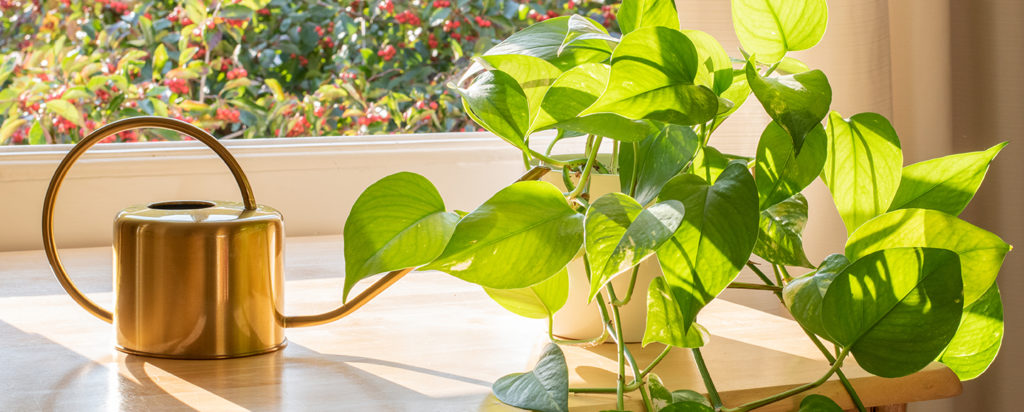
troubleshooting
-
spotted flowers?
Blooms may be damaged by improper watering. Your Begonia’s flowers are likely getting brown or transparent blotches where water drops have soaked through the petal. To prevent this, shield your petals when watering or be sure to hold the hose close to the soil versus above the plant.
-
white, powdery leaves?
This is mildew caused by a fungus that lives on the surface of your plant. Mildew will coat your Begonias in a white or gray powdery mold. Mildew will cause your Begonia’s leaves to discolour and drop off. To avoid this, be sure to allow adequate space between plants and collect any debris that falls around the base of the plant. Be sure not to overwater your plant!
-
dropping buds?
Could be caused by either over or under watering your plant, especially if they dry out completely between watering. Although tuberous begonias do best when the soil surface dries out slightly between waterings, try not to let them dry out completely. A sudden temperature change from hot to cold could also cause buds to drop off.
-
faded flowers?
Could be a result of a fungal disease that often results from poor ventilation, insufficient light or high humidity. Remove those faded flowers and be sure that your Begonias are planted in a well-ventilated area that receives adequate light, versus in a shady area. If the growing season is especially humid, gray mold may appear despite precautions. In such a case, destroy infected plant parts, and spray buds and blooms with flowable sulfur fungicide every 3 to 5 days.

begonias
aka begoniaceae or begonia semperflorens
Begonias are popular houseplants and shaded garden beds. They have tropical/sub-tropical origins, and are known for their interesting, asymmetrical leaves. They add a bright punch of colour to a garden bed because of their bright, small flowers and variegated leaves.
variations
Wax begonias, Tuberous begonias, Cane begonias, Rhizomatous begonias, Rex begonias
light
filtered sun
Partial shade or filtered light
water + feeding
not too thirsty
Regular watering is important for healthy plants. The soil should remain moist at all times, but not too wet, as this can cause root rot. Water at the base of the plant to keep the foliage dry and prevent leaf spot and fungal diseases. For general growing purposes, apply a balanced water-soluble fertilizer once a month in the growing season. For plants grown strictly for their foliage, like angel wings, use a fertilizer that is higher in nitrogen.
toxic
somewhat
Although its most toxic parts are underground, it’s still best to keep begonias out of reach of your pets
size
mostly medium
Wax begonias: Wax begonias are typically grown as annuals, reaching 6 to 12 inches tall and wide. Tuberous begonias: They also have a larger growth habit than wax begonias, growing 12 to 18 inches tall as houseplants and up to 3 feet or more in outdoor containers. Cane begonias: Their size varies with growing conditions, from 6- to 12-inch houseplants to bushy plants up to 5 feet. Rhizomatous begonias: Sizes vary from just a few inches to large plants up to 3 feet tall and wide. Rex begonias: generally reach 12 to 18 inches tall and wide.
pro tip
happily root-bound?
Potted begonias prefer to be slightly root-bound rather than given too much room. Only repot when necessary, and preferably in spring before plants are moved outside and start actively growing. Select darker-leaved varieties or types with improved heat and sun tolerance for sunnier spots.
fun fact
cousins to pumpkins
The flower is related to pumpkins, squash, gourds, cucumbers and melons. Tuberous and wax begonias are edible and have a citrusy taste. The name Begonia honours Michel Begon, a former governor and amateur botanist.
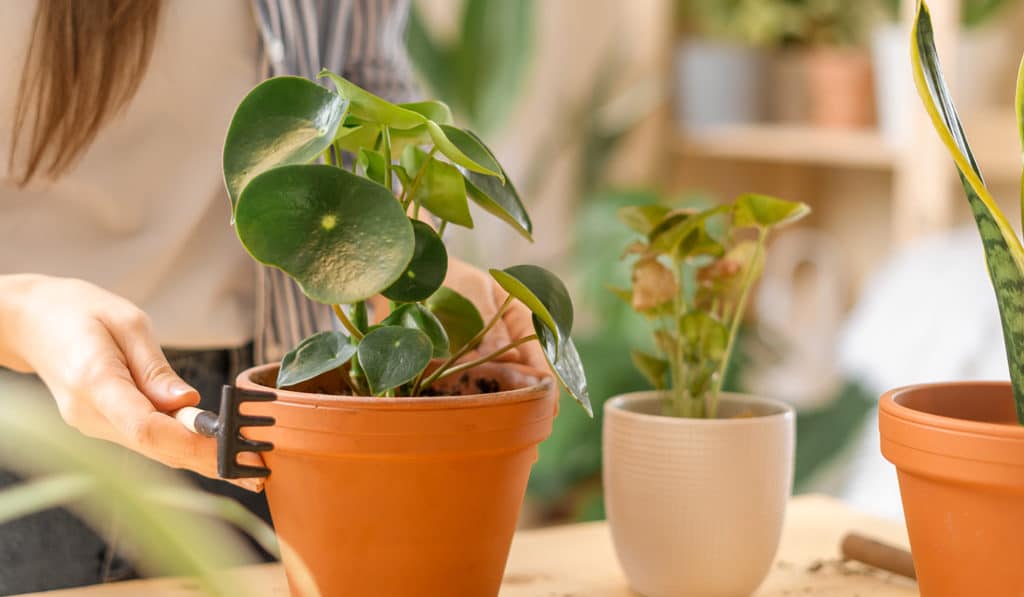
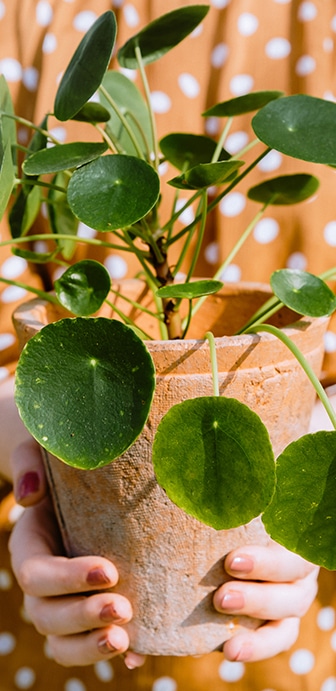
beyond the basics
-
soil & potting
This plant likes a light, well-draining soil like Miracle-Gro Cactus, Palm and Succulent Potting Mix. Or add some potting sand or perlite to regular potting soil. Your pot must have good drainage and don’t let Pilea sit in water. If you see water collecting in the drainage tray, dump it.
-
when to repot
Repot every 1 to 2 years in the Spring, especially with younger plants. Increase pot by 2 inches every time. If dealing with a more mature, fully grown plant you can just replace the top few inches of soil.
-
propagation
So easy, because Pilea is self-propagating. It creates tiny offshoots also known as ‘pups’. You can leave them on the plant, or create a new one. Wait until your Pilea pup is at least a few inches tall. Gently dig under the pup and cut (or gently pull) the plant free, ensuring you get roots. Put the pup in some water to grow stronger roots, or plant directly in soil. You have a new mini Pilea that makes a perfect gift!
-
pest control
Pileas are bug resistant, but pests are still possible. Inspect under the leaves when doing your regular dusting & cleaning. Check out our Pest control section in Plant 101 for how to identify and deal with pests on your plant!
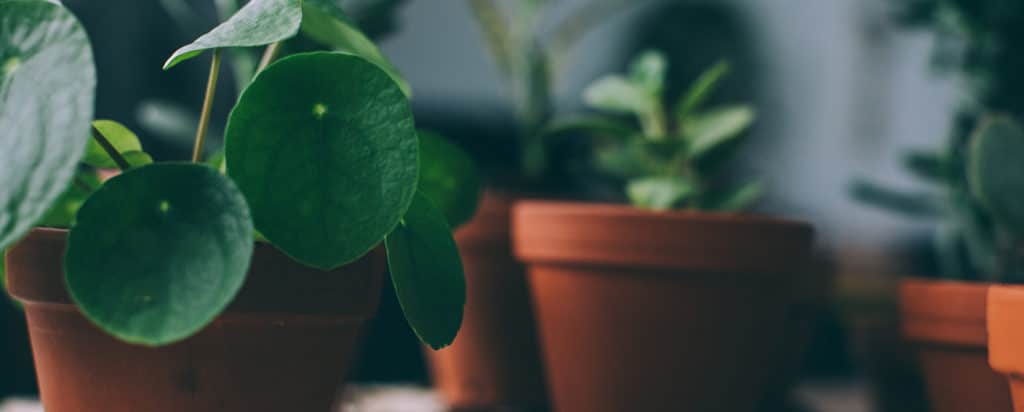
troubleshooting
-
leaves curved in, or out?
Light and water are incorrect. If the leaves are curled inwards, your Pilea is probably dehydrated. It’s not getting enough water, or it’s getting too much sun. On the flipside, If the leaves are curled outwards it’s probably too much water or not enough light. Check your soil before watering and ensure the top two inches of soil are dry before watering. Time between watering varies by plant and how much light they’re getting.
-
leaves turning yellow or dropping off?
Where are they yellowing? If only the bottom leaves are yellowing and dropping, there’s no problem. That’s normal Pilea behaviour. But If the whole plant is yellowing, you’re probably overwatering. When doing your watering routine, make sure the top 1 to 2 inches of soil are dry before watering.
-
leaves facing in one direction?
Rotate your plant! Pilea’s love to grow towards the sun. This can cause them to become one side heavy or grow unevenly. You should remember to turn your plant every time you water to allow the plant to grow evenly.
-
mold on the surface soil?
Overwatering, too little time between watering. Mold (and even mushrooms) growing on your soil is not a direct threat. But it IS a sign of overwatering. Root rot can follow if not addressed. Water less frequently and make sure you let the top two inches of soil fully dry before watering. Ensure you have proper drainage. If things look really moldy, you can remove the top inch or so of soil.
-
powdery, white patches on leaves?
Powdery mildew. Like mold, this isn’t dangerous, but it makes your precious Pilea less pretty! So it’s got to go. Bad air circulation is usually the cause. Remove affected leaves and move your plant somewhere with better air circulation.

